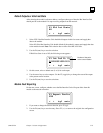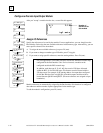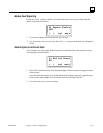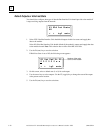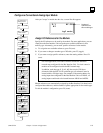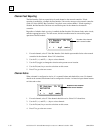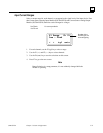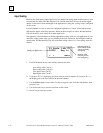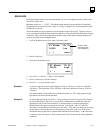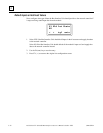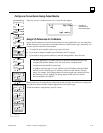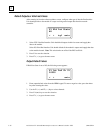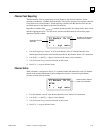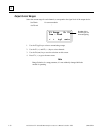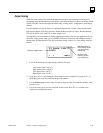
GFK-0825F Chapter 5 Station Configuration 5-33
5
Alarm Limits
Each input channel can have two alarm thresholds, one for a low engineering units (scaled) value
and one for a high value.
Maximum values are +/-32,767. The high threshold should be greater than the low threshold.
Threshold limits are based on circuit scaling. If scaling is changed, review and readjust the Alarm
Thresholds if necessary.
Alarm Thresholds can be set anywhere over the dynamic range of the signal. Typically, they are
set at levels beyond which the input should not operate or levels beyond which alternate processing
is required. They can also be set beyond the dynamic range of the signal, ensuring that they will
never be activated. See the examples below.
1. For EACH channel in turn, first, enter a low alarm value:
S1 Alarm Ch 01
< > entr
00000 low
Number of the
channel you are
now configuring
2. Press F4 (entr) key.
3. Then enter a high alarm value:
S1 Alarm Ch 01
< > entr
00000 high
4. Use the F1 ( < ) and F2 ( > ) keys to select channels.
5. Press F4 (entr) key to save the selection.
6. Press F2 ( > ) to go to the next screen.
A circuit is expected to report engineering unit values of -20 ft/sec (-6 m/sec) to +180 ft/sec
(+50 m/sec). The high alarm is set at 150 ft/sec (+40 m/sec) and the low alarm at -25 ft/sec (-
7.5m/sec).
If an input reached its high alarm, a new threshold could be set. This could generate a high-
high alarm or an alarm-cleared threshold.
An Alarm Threshold is set at 150 ft/sec. Upon receiving an alarm message, the CPU changes
the Alarm Threshold to 165 ft/sec by using a Write Configuration command and sends the
appropriate Clear Circuit Fault command. No alarm message is sent upon changing the
threshold unless the speed is greater than 165 ft/sec. If the speed is only 157 ft/sec but
increasing, a second message would be sent at 165 ft/sec. Since these two diagnostic messages
are the same, it would be necessary for the program to keep track of the level of the Alarm
Thresholds and recognize this as a higher alarm than that received initially. At the same time,
it could move the low alarm to 140 ft/sec and use this level to detect the end of the high alarm
conditions.
Example 1:
Example 2:



